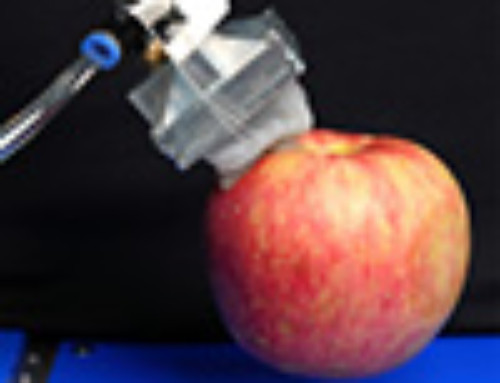[ad_1]
The use of industrial robots is growing at an unprecedented rate in India. Are blue-collar jobs under threat?

The sale of industrial robots in India reached a record high of 3,412 units in 2017. Representational Photo: Getty Images
When Ramesh Negi started working as a technician at an automotive parts manufacturing unit in Faridabad in 2014, he had no idea he could lose the job to a machine. Belonging to a poor family in Utta rakhand, he had come to his relatives in the Haryana city in search of a job after completing his class X and almost immediately found one. But in March 2016, the owner of the work- shop bought a computer-numerical-control (CNC) machine for Rs 7 lakh and fired Negi along with three others.
CNC machine is categorised as an industrial robot and the use of such machines is rapidly increasing in India. The International Federation of Robotics (IFR), a Germany-based non-profit with members from over 20 countries, defines industrial robot as “an automatically controlled, reprogrammable, and multipurpose machine”. A January 2019 report of IFR says that the sale of industrial robots in India reached a record high of 3,412 units in 2017, up 30 per cent from 2,627 units sold in 2016. “Even this data could be an underestimation if IFR only took account of the sales of multinational companies that have set units in India, such as ABB and Gudel, and not the sales of local robot manufacturers that are buying spare parts and assembling robots,” says Santosh Hulawale, an independent robot maker based in Mumbai. The sales of Pune-based Mahajan Automation, for instance, have risen significantly, say its officials, but refuse to reveal by how much. So what has triggered this automation and what are the implications?
According to a 2017-18 report of the Union Ministry of Micro, Small and Medium Enterprises, there are about 4,000 big industries in the country, employing over 4 million people. Traditionally, big industries have been the primary users of industrial robots because only they could afford them. But a gradual fall in prices since 2014-15 has made robots affordable to even micro, small and medium enterprises (MSMEs)—a government categorisation of units with an annual turnover of under Rs 250 crore. There are over 19.7 million MSMEs in the manufacturing sector in India, employing 36 million people.
The fall in prices took place because companies started assembling robots in India. This became possible after the government waived import duties on electronic parts that can be used to build robots in July 2014. “Local assemblage reduced the cost of an industrial robot that can pick and place payloads of up to 6 kg from Rs 50 lakh in 2014 to Rs 25 lakh today,” says Hulawale. This boosted their sales. “Our smallest customer is a company with a turnover of only Rs 4 crore, which makes it a micro enterprise,” says Naresh Kantoor, managing director of Gurugram-based robot manufacturer Encon Systems International (see ‘If humans, robots work…’).
The use of industrial robots will increase further with improvements in technology. “More warehouse and packaging industries are using robots with six degrees of freedom (robots that can move in six directions—up, down, right, left, forward, backward),” says Akash Gupta, co-founder of Gurugram-based robotics company GreyOrange. “The use of servo motors, a generic motor used to make motions of robots smooth and human-like, is also increasing. Many such motors are used in a single robot,” says Hulawale. “Currently, most servo motors are produced and supplied by companies from developed countries like Japan’s Panasonic, Yaskawa and Mitsubishi, and Lenze and Bosch Rexroth based in Europe. But now two-three companies in India have also started making them which will bring their cost down substantially,” Hulawale adds.
Job loss imminent?
Does this mean that blue-collar jobs are under threat in India? There have been a few cases recently that suggest so. In 2017, a Tata plant in Pune employed 100 robots to cut 20 per cent of its labour force and the move increased the unit’s productivity by 250 per cent, says a paper by Sunil Mani, professor of economics at the Centre for Development Studies in Thiruvananthapuram, Kerala. A study by Oxford Martin School, a research and policy unit based in the Social Sciences Division of the University of Oxford, published in 2017, also estimates that 69 per cent jobs in India are at a risk of automation which includes industrial robots.
However, Mani says its difficult to say that automation will necessarily lead to job loss. “To accurately predict how the manufacturing sector in India will get affected by industrial robots, one needs to look at the tasks within jobs that robots can take over from human beings rather than looking at entire jobs. The Oxford Martin study takes into account entire occupations leading to an overestimation,” he says, but refuses to give a job loss estimate of his own. “What is clear is that when artificial intelligence and machine learning technologies become commonplace and robots become more dextrous, with greater decision making abilities, more human tasks would be performed by industrial robots,” Mani adds.
We are a voice to you; you have been a support to us. Together we build journalism that is independent, credible and fearless. You can further help us by making a donation. This will mean a lot for our ability to bring you news, perspectives and analysis from the ground so that we can make change together.
[ad_2]
Source link





Leave A Comment
You must be logged in to post a comment.